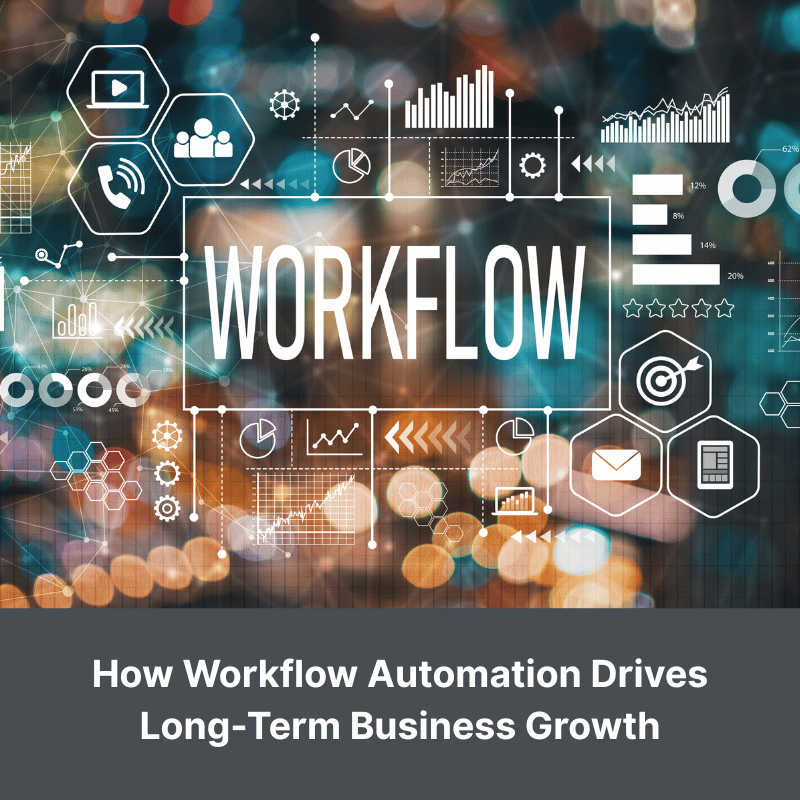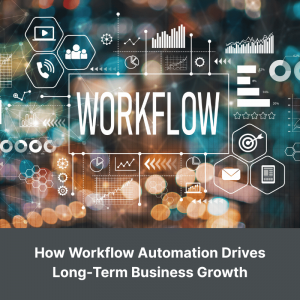
 If you’ve ever caught yourself spending more time managing tasks than growing your business, you’re not alone. Repetitive work like sending invoice reminders, assigning tasks, or chasing approvals may be necessary, but they often keep your team from doing work that actually moves the needle.
If you’ve ever caught yourself spending more time managing tasks than growing your business, you’re not alone. Repetitive work like sending invoice reminders, assigning tasks, or chasing approvals may be necessary, but they often keep your team from doing work that actually moves the needle.
That’s where workflow automation comes in. It’s not just about saving time. It’s about freeing up your team to focus on the work that matters most. In an increasingly competitive marketplace, the ability to automate and streamline internal processes is quickly becoming a key driver of sustainable growth.
What Is Workflow Automation?
Workflow automation uses technology to manage routine business tasks without manual input. These tasks are often rules-based, like "if this happens, then do that." By automating them, your team can eliminate bottlenecks and reduce errors while increasing efficiency.
Examples of workflow automation include:
- Automatically assigning tasks when a new customer is onboarded
- Sending out follow-up emails based on customer actions
- Creating invoices and payment reminders without manual entry
- Updating CRM records when specific milestones are met
When implemented well, automation tools create consistency, increase speed, and free your staff to tackle higher-value initiatives.
The Real Impact of Workflow Automation on Business Growth
Automating your workflows is more than a tech upgrade—it’s a long-term strategy that strengthens your entire operation. Here's how it drives sustainable growth:
Improved Consistency
Workflow engines follow the same steps every time. That means fewer mistakes, more reliable results, and processes that scale without hiccups. You get:
- Standardized output
- Consistent communication
- Fewer errors from manual input
Increased Efficiency
A study by McKinsey found that automation can improve productivity by up to 25%. Instead of waiting for someone to approve a document or manually send updates, tasks move forward automatically.
You’ll notice:
- Faster turnaround times
- Less time wasted on manual follow-ups
- More bandwidth for strategic projects
Simplified Scaling
Growth means more customers, more projects, and more moving parts. Workflow automation helps you handle the increase without hiring additional staff. Your business can expand faster while maintaining operational control.
Significant Cost Savings
When you automate, you reduce the need for repetitive labor and cut down on costly human errors. Those savings can be reinvested into innovation, marketing, or hiring skilled talent where it’s truly needed.
Higher Job Satisfaction and Employee Retention
Employees want to do work that feels valuable. Automation clears the low-value clutter off their plates so they can focus on solving problems, building relationships, and contributing creatively.
Don’t Overlook the Power of Business Rules Engines
At the heart of every workflow automation platform is a rules engine—a system that makes decisions based on pre-set guidelines. The beauty of a rules engine is that it’s flexible. You don’t need to write custom code to adjust it. That makes it easy to pivot quickly when customer demands, industry regulations, or internal policies shift.
With a rules engine, your business gains:
- Greater agility in changing conditions
- Faster process adjustments
- More control over how workflows behave
Automation Doesn’t Replace People—It Empowers Them
One of the biggest myths about automation is that it eliminates jobs. In reality, it helps people do their jobs better. It reduces burnout, improves morale, and gives your team the tools they need to focus on work that actually contributes to growth.
The best leaders are always looking for ways to work smarter. If your team is bogged down by busywork, it’s time to explore a smarter path forward.
FAQs About Workflow Automation
Q1: Is workflow automation only for large businesses?
No. Small and midsize businesses benefit just as much—if not more—because automation helps them stay lean while scaling quickly.
Q2: Will automation be difficult to implement in my existing systems?
Not necessarily. Most modern workflow platforms are built for integration and don’t require custom development. Many tools can connect directly with your CRM, email system, or cloud apps.
Q3: What types of tasks are best suited for automation?
Any repeatable, rules-based task is a great candidate. Common examples include invoicing, customer follow-ups, employee onboarding, and data entry.
Contact CTTS today for IT support and managed services in Austin, TX. Let us handle your IT so you can focus on growing your business. Visit CTTSonline.com or call us at (512) 388-5559 to get started!
